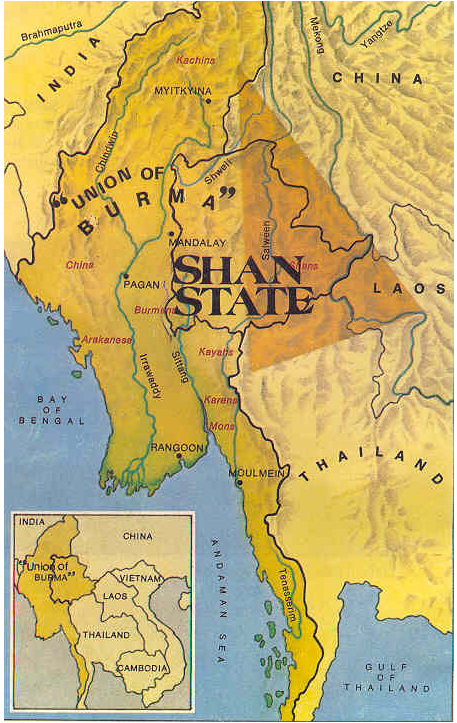Most Shan people reside within the Shan State in eastern Burma (Myanmar). With an area of circa 64,000 square miles, or roughly the size of New England, the Shan State occupies about one-fourth of the total area of Burma (which is approximately the size of Texas). The Shan State is divided by the Salween (Thanlwin) River, one of the largest rivers in Asia, resulting in culturally distinctive Eastern and Western Shan peoples.
Current estimates report that 5-6 million Shan (approximately ten percent of Burma’s population) live in the Shan State, which has a total population of around 8 million. Although the majority of the Shan still live in the Shan State, various forms of conflict have caused some Shan people to flee to the neighboring lands of China (Yunnan Province), Laos, and Northern Thailand. Each of these areas already had indigenous populations of Shan people living in them. There are an estimated 270,000 Shan living in Yunnan Province and approximately 30,000 in Northern Thailand, primarily in the Mae Hong Son province, located west of Chiang Mai near the northwestern border. This latter figure, however, includes only Shan who are Thai citizens ; the actual Shan population in Thailand is estimated to number in the hundreds of thousands.
Unfortunately, it is virtually impossible to estimate the true number of Shan, because census reports are usually inaccurate (if they exist at all). For instance, population estimates from Burma purposely underreport Shan and other minority groups. Additionally, Thai reports do not include a separate number for the Shan who are legally in the country, as they are considered Thai citizens.
 |


